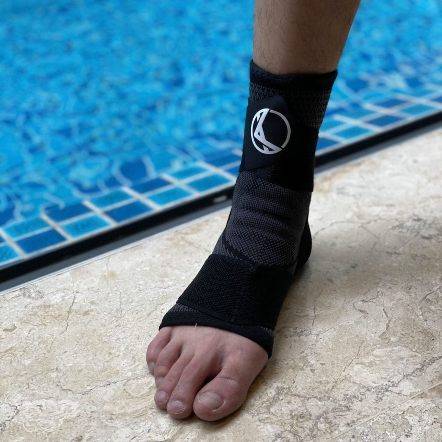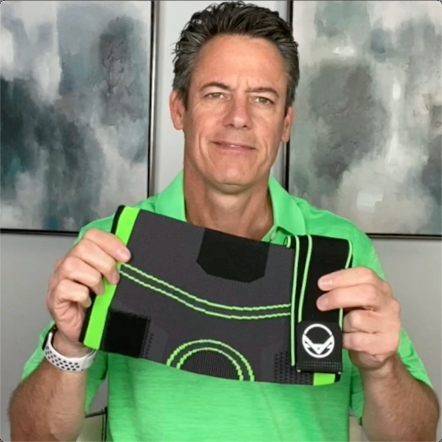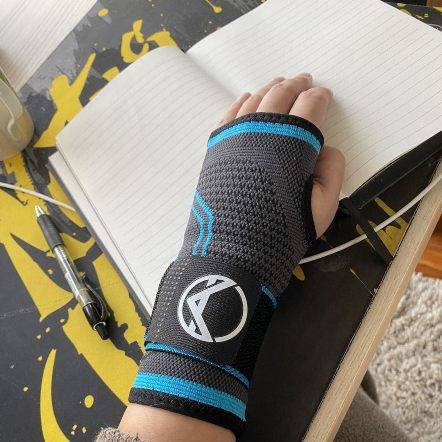
How Long Should You Wear a Back Brace for Lower Back Pain?
july 6, 2023 | 4 Mins Read
TABLE OF CONTENTS
1. Do Back Braces Work for Lower Back Pain?
2. How Long Do You Have to Wear a Back Brace for Lower Back Pain?
3. How Long Does it Take to See Results with a Back Brace for Lower Back Pain?
4. Can Wearing a Back Brace Replace Exercise and Physical Therapy?
5. Are There Disadvantages of Wearing a Back Brace for Lower Back Pain?
Conservative treatment for lower back pain includes wearing a back brace, physical therapy, muscle relaxants, NSAIDs, and rest. People with persistent back pain want treatments that are effective and convenient to use. A back brace is one of the most commonly used treatments for lower back pain, but it's important to wear it correctly and for the right amount of time.

When faced with persistent lower back pain, you might ask, "Do back braces work for lower back pain?" The answer, in short, is yes - but with a few important caveats.
Back braces are designed to support your spine, promote correct posture, and in some cases, limit mobility to help the healing process. They can provide temporary relief from lower back pain by reducing strain and pressure on the spinal structures. This is particularly beneficial when recovering from an injury, undergoing physical therapy, or performing tasks that could exacerbate the pain, such as lifting heavy objects.
A back brace offers symptomatic relief but it's not a cure-all solution. The effectiveness of a back brace largely depends on the root cause of your lower back pain. For instance, if your pain is due to muscle strain or sprains, a back brace can certainly help. It can also be useful in cases of degenerative disc disease, sciatica, or herniated discs, where additional spinal support is necessary.
In contrast, if your pain results from conditions like kidney stones or internal organ issues, a back brace is unlikely to provide much benefit. Moreover, wearing a back brace does not replace the need for a comprehensive treatment plan, which may include medication, physical therapy, exercise, and lifestyle modifications.
Here are some ways in which back braces may potentially help with lower back pain:
When a back brace is prescribed as part of your treatment for lower back pain, its purpose is to allow your spine's vertebrae (bones) time to heal and prevent collapse while reducing pain. The expected duration for wearing the brace is typically a minimum of three months, although this may vary based on your imaging results.
In most cases, for acute lower back pain, a back brace is worn for a short duration - typically a few hours each day. This period can range from a couple of days to a few weeks, depending on your healthcare provider's recommendation. The idea is to give your back the necessary support while not allowing your muscles to become overly reliant on the brace.
If your lower back pain is chronic or you're recovering from back surgery, you might need to wear the brace for a longer period. This could be anywhere from a few weeks to a few months.
The primary goal of prescribing a limited duration for wearing the back brace is to prevent excessive reliance on the brace and potential muscle atrophy. Prolonged use of a brace can cause the supporting muscles of the back to weaken over time.
The effectiveness of a back brace for lower back pain can vary from person to person. While some individuals may experience immediate relief or improvements in pain with the use of a back brace, it is important to note that the timeline for seeing results can vary.

Wearing a back brace should not be seen as a substitute for exercise and physical therapy when it comes to managing lower back pain. While back braces can offer support and pain relief, they do not address the underlying causes of the pain or contribute to long-term healing and prevention on their own.
Exercise and physical therapy play essential roles in the treatment of lower back pain. They help strengthen the muscles of the back and core, improve flexibility, and enhance overall posture and body mechanics. These interventions are designed to target specific areas of weakness or imbalance, address muscular imbalances, and promote proper movement patterns.
By participating in exercise and physical therapy, individuals with lower back pain can improve their overall function, reduce pain, and prevent future injuries. These interventions may include stretching, strengthening exercises, aerobic conditioning, manual therapy techniques, and education on proper body mechanics.
While back braces can provide benefits for lower back pain, there are also potential disadvantages to consider. These include:
Prolonged use of a back brace can lead to muscle weakness and atrophy. By relying heavily on the brace for support, the muscles in the lower back may become less active and lose strength over time. This can potentially worsen the condition and make the back more susceptible to injury once the brace is no longer used.
Depending on a back brace for an extended period can create a sense of dependency. Some individuals may become reliant on the brace and find it challenging to perform daily activities or movements without wearing it. Over time, this can hinder the development of natural, healthy movement patterns and self-reliance.
Wearing a back brace for prolonged periods can cause skin irritation or discomfort. The material of the brace and the tightness of its straps may rub against the skin, leading to redness, chafing, or even skin breakdown in some cases. Proper fitting and regular cleaning of the brace can help mitigate these issues.
Back braces are designed to limit movement in the lower back to provide stability and support. While this can be beneficial in certain situations, it can also restrict mobility and range of motion. Limitations in movement may affect activities that require bending, twisting, or reaching, potentially impacting daily tasks or occupational duties.






References
Author

Claire Evans worked as the content marketing manager at Koprez. Claire combined a background of writing and editing, marketing, and patient education to best serve consumers, fitness enthusiasts, athletes, and anyone who relies on the Koprez brand for helpful information.
Koprez® Featured Products


"I sprain my wrist super often, so I decided to try out this sleeve. This is game-changing! I've been using it for a while now, and my wrists feel amazing. I haven't gotten in any injuries since using it too. It just makes my wrists feel so supported."
Alexis A.


"Use this for my boxing training. It is a very comfortable brace and does not move out of position during skipping ropes and sparring sessions. I use it while running too. Probably the best brace I've purchased throughout the years. It is very flexible. Makes me look like a pro! :)"
Samuel L.


"I've just got back to running after a couple of years of being plagued by injury. These compressions socks are helping give me peace of mind while I build up my distance again. They are the perfect level of compression, super comfy, and very high quality. Feel great while on a run, and looks great in the orange colour I have!"
Dave R.


"I have a weak ankle, and the Koprez ankle sleeve has been a lifesaver. Wear it every day. Super breathable and comfortable. Like wearing a cool sporty looking sock!"
James F.


"This is the best knee sleeve I've ever tried. It's now a must-have for all my exercises. A few years ago, I had an accident that damaged my knees, but with Koprez I can be active again with no knee pains at all. It's been truly amazing!"
Alex M.


"One of the best purchases I've ever made. It fits your legs all the way from top to bottom, great snug fit, gives you support and definitely helps during rehab and training."
Rafael A.


"I had a minor elbow injury, and Koprez sleeve was super supportive and definitely helped me recover faster. I still use the sleeve to prevent further injury. So far, so good. Very comfortable and does not feel hot at all. Highly recommend!"
Corey B.


"It's really been a game-changer for me. It allows me to exercise a lot longer than I used to. Now my knees don't hurt, and they're not uncomfortable at all."
Mike P.


"Great product!!"
Harold


"I have carpal tunnel, and this brace has helped me work pain-free. Love the materials, and I can feel my wrists slowly getting better, even when I don't wear them!"
Christopher J.


"I wanted to try out these sleeves to improve my squats and deadlift in the gym without worrying about injuring my knees. They stayed up throughout the entire gym session, and my knees feel super supported. Now I can do what I love for years to come. "
Corbin C.